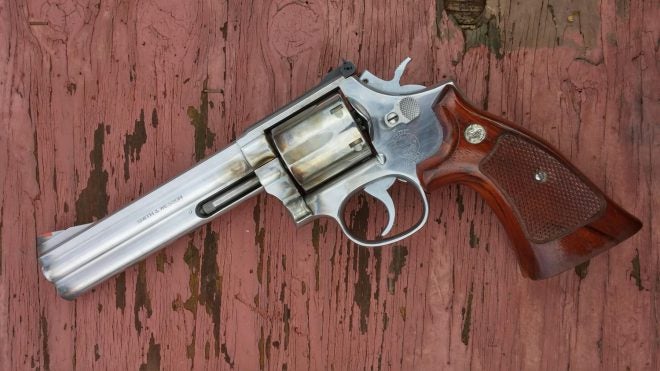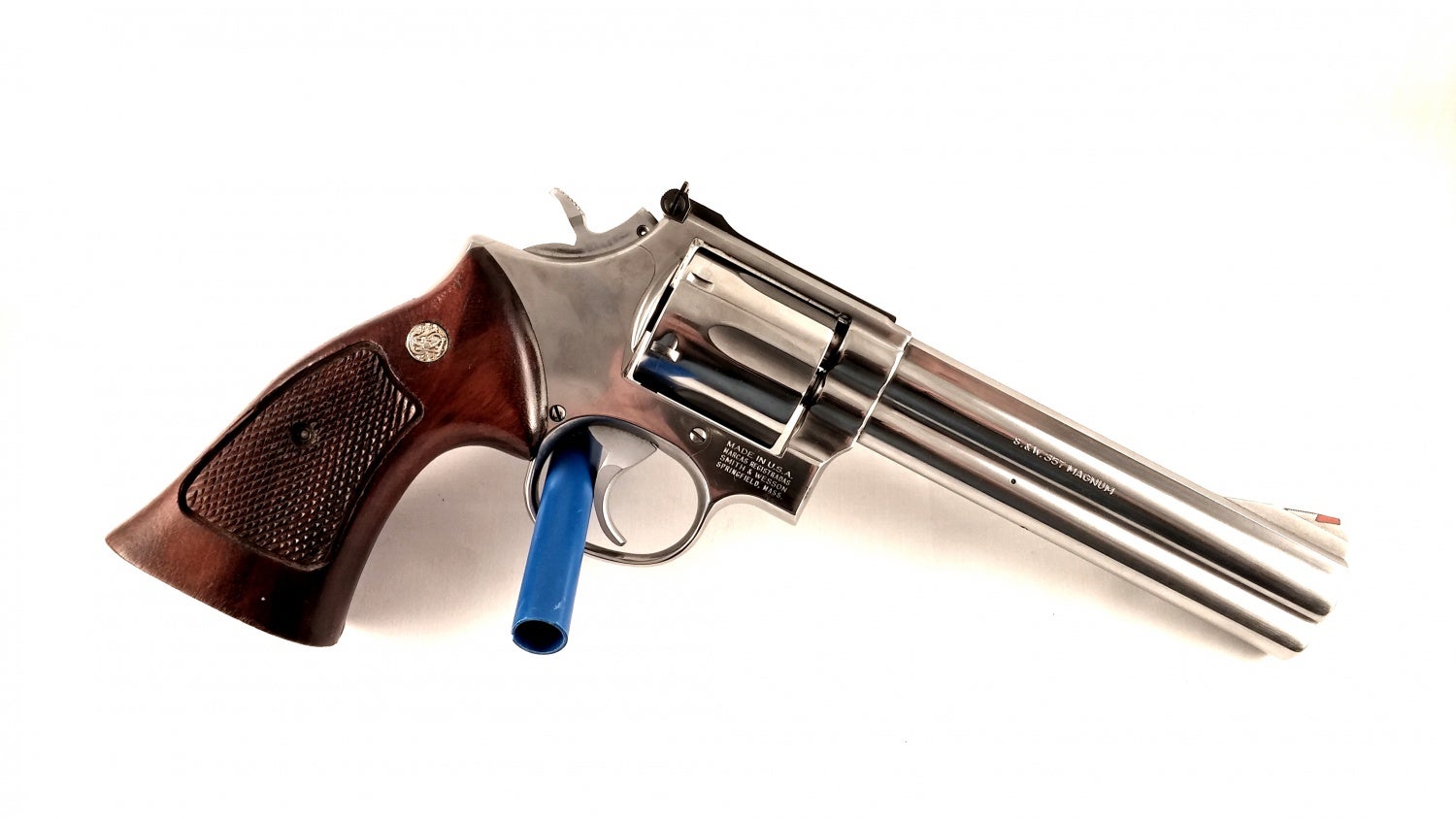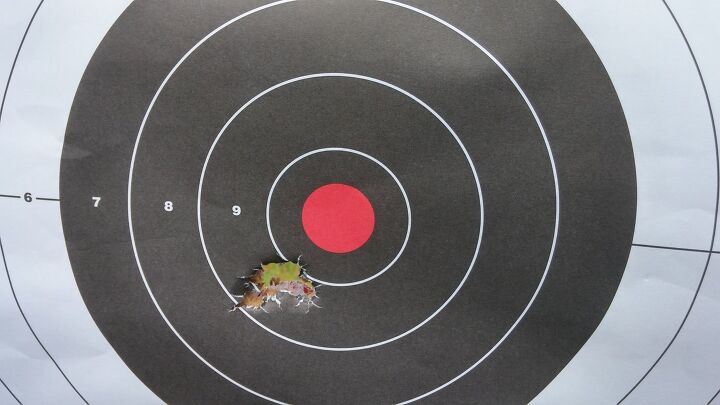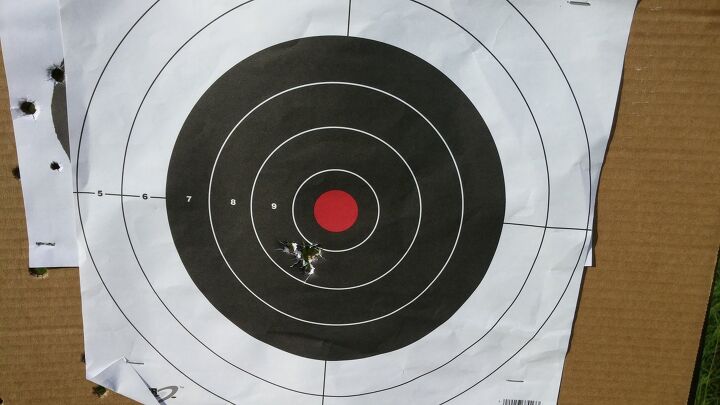Many pistol shooters of my generation grew up in a world with a wide variety of fantastic black plastic handguns that are as durable as a tank, have triggers ranging from “decent” to “awful”, run below six notes in price, and are uniformly ugly as sin. These are very practical weapons for self-defense, but for a lot of people they bring pistol shooting closer to a chore than recreation. For a while now, I’ve been looking for a handgun that could come with me on Pistol Day and add a little more fun to the experience, and maybe a touch of class, too. Unlike Alex C, I’m not made of money, and I couldn’t just go out and buy a Manhurin or a Python and be done with it, so instead I went looking for Smiths. Recently, I found one that I wanted at the right price: A “no dash” Model 686 in .357 Magnum, made in 1983.
The 686 was introduced largely as a belated response to the Python, and it was Smith & Wesson’s first .357 Magnum handgun with the same full underlug profile that was so distinctive about the Python. In a lot of ways the 686 has become the “poor man’s Python”, in fact, especially since the now-discontinued Colt is fetching three grand and above. I admit the resemblance to the Python was part of the reason I chose this particular revolver, but I also wanted something that had old-fashioned pre-MIM lockwork, a firing pin on the hammer, and no unsightly lock on the side. That meant I had to get a -4 or earlier model, but I’m quite pleased I ended up with one of the earliest ones, for nostalgia reasons.
The thing about quality revolvers like these Smiths, though, is that they aren’t just good looking; they shoot great, too. In fact, after having taken this pistol to the range, I think it might be my best-shooting handgun, although depending on the ammunition I am using, my 1990-made P220 can shoot equally well.
To illustrate how nice of a shooter these pistols are, here are some groups:
Hornady 125gr FTX .357
Aguila 130gr FMJ .38
The neat thing about a pistol like this is how easy it is to shoot it this well. After the range trip was over, I joked that the 686 “basically shoots itself”, and that’s not far off. Printings groups like those above is as easy as gripping the gun, resting its flat butt on a bag, lining up the excellent sights (which were much better than I expected, as I am partial to wide, serrated black sights), and pressing the trigger. I am not exaggerating when I say that I think the last gun I shot that was this easy to master was probably a $10,000 benchrest rig, not to make a comparison regarding accuracy, of course. A big part of this is the trigger, which breaks at about 3.6 pounds on my gun, and in terms of creep, overtravel, etc. is as perfect a one as I have ever owned.
Once upon a time, of course, wheelguns like these were considered state-of-the-art fighting guns, but now those days are over. However, a Glock may be the better business partner, but when it comes to making me smile on the range, I’ll take my Smith.
 Your Privacy Choices
Your Privacy Choices




